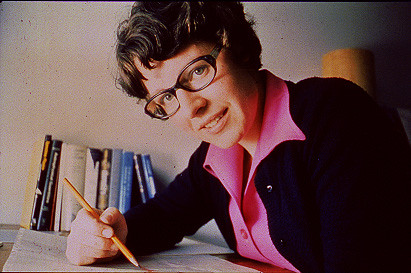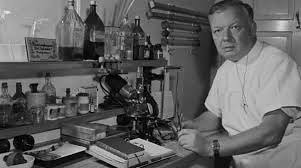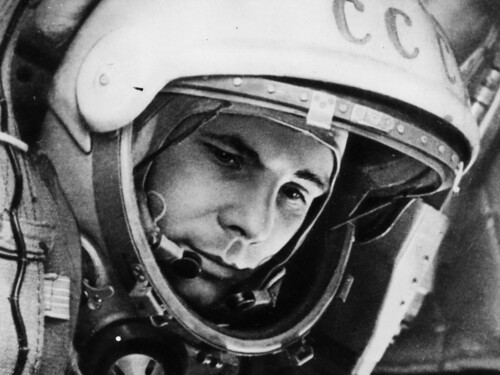Is military IT power waning?
 First published in Computing, November 2003
First published in Computing, November 2003Military IT was once a seedbed for innovation, but today it appears business IT is calling the shots
The anti-war movement has tended to omit arms firms from its gallery of rogues: it has been Texaco and other oil majors, and Dick Cheney’s oil-to-construction empire Halliburton that have been criticised for gaining a pecuniary interest in Gulf War 2. Yet the same “Not in my name” crowd misses the changing role of the military-industrial complex (MIC), not in prompting US belligerence – that was always very arguable – but in shaping the future of IT. In very broad terms, the MIC is an iron triangle of the armed services, arms firms and government.
Traditionally, the Pentagon would specify weapons systems of infinite cost and complexity, and apologetic economists would welcome the technological “spin-off” from such systems for the civilian sector. The phenomenon went a lot further than the popular ode to Nasa and the Teflon frying-pan.
After Sputnik in 1957, for example, the need for missile-borne IT systems to be light had a lot to do with the development of the integrated circuit.
In recent decades, however, the wastefulness of the MIC has become so great that analysts have tended to highlight “spin-on” rather than spin-off as the chief trend in military technology. The network-centric warfare that has dominated desert actions is based on the familiar, peaceful technologies of laptops, the Global Positioning System and – a thing I found especially scary about the war in Iraq – giant, glitzy, consumerish flat-screen displays.
Of course, since 11 September 2001 there has been an enormous effort by the Department of Defense, US universities and private inventors to come up with new defences against Al Qaeda. But something has changed.
In the new military zone of “asymmetric warfare”, every Pentagon IT system is felt vulnerable to hackers of a fanatical bent – at any time. In this scenario, military applications of IT may be no defence at all, right now, against lone codebreakers.
To my mind, however, all this goes to show that risk aversion now dominates military life as much as the civilian sort. In a world where Microsoft can only bring itself to pay a bounty of $250,000 for information about the originators of viruses, I can’t quite believe that a few keystrokes from a jihadi in an Afghan cave can bring down America’s satellite telecommunications.
Enthusiasts and critics of military IT overestimate, respectively, its vulnerability and its power. Of course, the software behind Bush’s Version 2.0 of Reagan’s old Strategic Defence Initiative cannot be relied on to provide an impermeable shield against missiles. But IT is nevertheless an important factor in US military superiority.
Fears of asymmetric hackers in fact reveal continuing frustrations about the MIC’s imperviousness to reform. As with our very own NHS, the feeling is that throwing money at government-related IT often achieves little bang for the buck.
Military IT is always worth scrutiny. But its dynamics are not all that special. As for the debate about spin-on and spin-off, that represents a Geoff Hoon-style abdication of responsibility. It is always someone else, it appears, who has the job of developing innovations.
Fmr President of Kenya on Trump cutting off foreign aid:
“Why are you crying? It’s not your government, he has no reason to give you anything. This is a wakeup call to say what are we going to do to help ourselves?”
America first is good for the world.
Our entire Green Socialist establishment should be banged up under the ‘Online Safety’ laws, for spreading demonstrable lies (the ‘climate crisis’), causing non-trivial harm to the industrial working class, ordinary drivers, farmers, taxpayers etc, etc.
#Chagos? #Mauritius PM Navin Ramgoolam "is reported to want Starmer to pay £800m a year, plus ‘billions of pounds in #reparations’." (14 January) https://www.spiked-online.com/2025/01/14/the-chagos-islands-deal-is-an-embarrassment/
Now the Torygraph wakes up https://telegraph.co.uk/gift/1ff8abbb462cd609
Read @spikedonline - first with the news!
Articles grouped by Tag
Bookmarks
Innovators I like

Robert Furchgott – discovered that nitric oxide transmits signals within the human body

Barry Marshall – showed that the bacterium Helicobacter pylori is the cause of most peptic ulcers, reversing decades of medical doctrine holding that ulcers were caused by stress, spicy foods, and too much acid

N Joseph Woodland – co-inventor of the barcode

Jocelyn Bell Burnell – she discovered the first radio pulsars

John Tyndall – the man who worked out why the sky was blue

Rosalind Franklin co-discovered the structure of DNA, with Crick and Watson

Rosalyn Sussman Yallow – development of radioimmunoassay (RIA), a method of quantifying minute amounts of biological substances in the body

Jonas Salk – discovery and development of the first successful polio vaccine

John Waterlow – discovered that lack of body potassium causes altitude sickness. First experiment: on himself

Werner Forssmann – the first man to insert a catheter into a human heart: his own

Bruce Bayer – scientist with Kodak whose invention of a colour filter array enabled digital imaging sensors to capture colour

Yuri Gagarin – first man in space. My piece of fandom: http://www.spiked-online.com/newsite/article/10421

Sir Godfrey Hounsfield – inventor, with Robert Ledley, of the CAT scanner

Martin Cooper – inventor of the mobile phone

George Devol – 'father of robotics’ who helped to revolutionise carmaking

Thomas Tuohy – Windscale manager who doused the flames of the 1957 fire

Eugene Polley – TV remote controls


0 comments